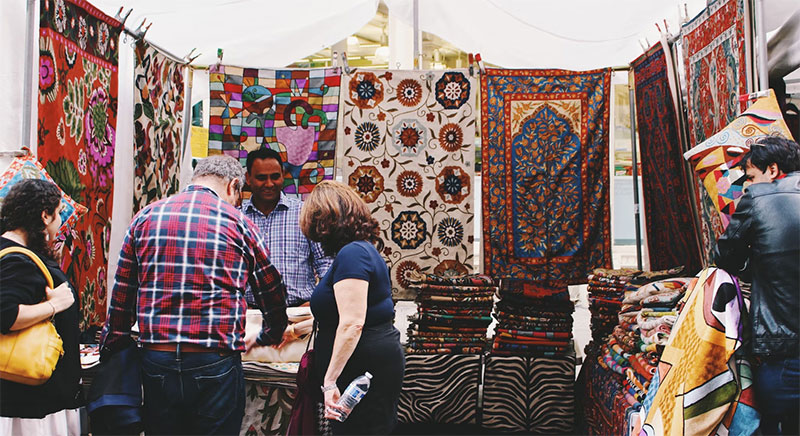Advertisement
When decorating your home, you can never have enough options. One of the best ways to make your space unique is by adding an Oriental rug. The global carpets and rugs revenue amounts to $44.62 billion in 2022. Thanks to the growing interest in carpets and rugs in the US, the highest income was generated in the US.
But before you jump into the world of rugs, there are some things you need to know about these beautiful pieces. This post will discuss some of the most common mistakes people make when shopping for an Oriental rug and how to avoid them.
Check the Rug Foundation
A good foundation is essential to determining the quality of an Oriental rug. You want to ensure that there are no knots in the foundation, which means it will not be tightly woven and may come apart over time. If you find a knot in the foundation, don’t worry, this does not necessarily mean that your rug is bad quality. Many people like having Persian rugs for their homes with minimal knots because furniture can easily hide those areas.
The best way to check for a solid foundation on an oriental rug is by simply rolling it back from one end and pulling it from another until it rolls perfectly flat without any gaps or wrinkles (you should also try rolling it from both ends). If you’re still unsure whether your oriental carpet has a solid foundation, look at its base material. If there are no bumps or waves, then it’s likely made with great care.
Investigate the Rug’s Pattern and Design
Once you know what kind of rug you want, it’s time to look at the patterns and designs. The pattern is one of the most critical aspects when choosing an oriental rug for your home. Patterns can be simple or complex, symmetrical or asymmetrical, traditional or modern, geometric or floral, and abstract or representational.
Simple patterns are often referred to as “classic” because they have been around for centuries and never go out of style. The most common simple patterns include Herati (which features a repeating geometric design); Kuba (which has a red border around the main area with geometric shapes); Chinese (with flowers in each corner); Sarouk (which has diamond shapes inside circles).
Complex designs incorporate several different types of patterns within one overall design. They are usually made of smaller designs featuring intricate detail work such as flowers, leaves, and vines that create a beautiful overall effect on your flooring surface area. You can visit Rug Source’s online rug store to check out a variety of patterns and designs.
Consider the Rug’s Color
The first thing you need to consider is the color of your rug. Color is probably the most important factor when selecting an oriental rug for your home. The color should be natural, not bright or dark. You will want a neutral tone that will match your existing furniture and decor.
It’s also essential to consider durability and washability when choosing a rug’s color because you will spend hours walking on it. It means lighter colors may show dirt more easily than darker ones, so if you plan on having pets or children who like playing on rugs, then go with something darker, like browns or blues instead of whites, etc.
Examine the Rug’s Size and Shape
Once you’ve figured out the rug’s material and pattern, it’s time to look at its size and shape. If you’re considering buying a rug for your living room, consider a rug that is 8′ x 10′ or smaller. It will allow the rug to blend in with the rest of your furniture while still allowing enough space for people to sit on it comfortably. For example, an 8′ x 10′ area rug would be ideal if four chairs were placed around a coffee table in your living room.
If you want a larger area rug in one part of your house (e.g., in front of the fireplace), we recommend choosing one that measures at least 7 feet by 10 feet or more so as not to crowd other furniture too much inside this particular space alone. And still, offer enough room for comfort between family members when sitting together to watch television after dinner every night.
Conclusion
Before making an Oriental rug purchase, it is essential to have an idea of what you are looking for. Are you looking for a rug that will complement your existing décor? Or do you have a specific design in mind? Area rugs are currently in demand, with the segment set to grow by $1.44 billion in the home furnishing market during 2021-2025.
There is no need to worry about the quality of your new Oriental rug. You can do a few things to ensure that you get a high-quality rug that will last for years and remain beautiful. Choose one with good knotting, substantial weaves, and wool fibers that are thick enough not to fray easily when cut or pounded by furniture feet.

